Ready to put your dental knowledge to the test? We’ve compiled a collection of brain-teasing dental riddles that will make you smile while challenging your mind. Whether you’re a dental professional looking for some workplace fun or simply someone who enjoys a good puzzle, these tooth-themed brainteasers are sure to entertain.
From clever wordplay about braces to pun-filled questions about toothbrushes, our dental riddles offer a refreshing way to think about oral health. We believe learning about dental care doesn’t always have to be serious—sometimes a good laugh is just what the dentist ordered! Jump into our collection and discover why these riddles have become a favorite among dental offices nationwide.
10 Brain-Teasing Dental Riddles to Test Your Oral Health Knowledge
- What has teeth but can’t eat?
A comb! This classic riddle highlights how we use the word “teeth” for objects that have tooth-like projections but serve completely different functions than our natural teeth.
- Why did the tooth go to therapy?
It had deep-rooted issues! Dental humor often plays on the anatomical structure of teeth, which actually do have roots that extend below the gumline to anchor them in place.
- What did the dentist say to the computer?
“This won’t byte a bit!” Computer terminology shares vocabulary with dental care, creating perfect opportunities for witty wordplay that connects two seemingly unrelated fields.
- Which teeth are never brushed?
The teeth on a saw! Many tools and objects feature tooth-like structures that serve mechanical purposes rather than chewing food, reminding us how common dental terminology appears in everyday objects.
- Why don’t teeth ever get arrested?
They always tell the tooth, the whole tooth, and nothing but the tooth! This play on the courtroom oath demonstrates how dental terms can be creatively substituted in familiar phrases.
- What’s a dentist’s favorite dinosaur?
A Flossaurus! While this dinosaur doesn’t actually exist, the riddle cleverly combines paleontology with the essential dental hygiene practice of flossing daily.
- How are teeth like stars?
They come out at night! This riddle refers to removable dentures that many people take out before sleeping, a common practice for proper denture care and oral health.
- What did the dental hygienist say to the patient who wouldn’t open wide?
“This is getting on my nerves!” Dental professionals frequently work with the nerves inside teeth during procedures, making this double meaning particularly relevant to oral healthcare.
- What’s the best time to go to the dentist?
Tooth-hurty (2:30)! This phonetic pun has become a classic in dental offices worldwide, making light of dental appointments while playing with the sound similarity.
- Why did the king go to the dentist?
To get his crown fixed! Dental crowns are protective coverings for damaged teeth, creating a perfect parallel with royal headwear that makes this riddle both educational and amusing.
Why Dental Riddles Make Learning About Teeth Fun
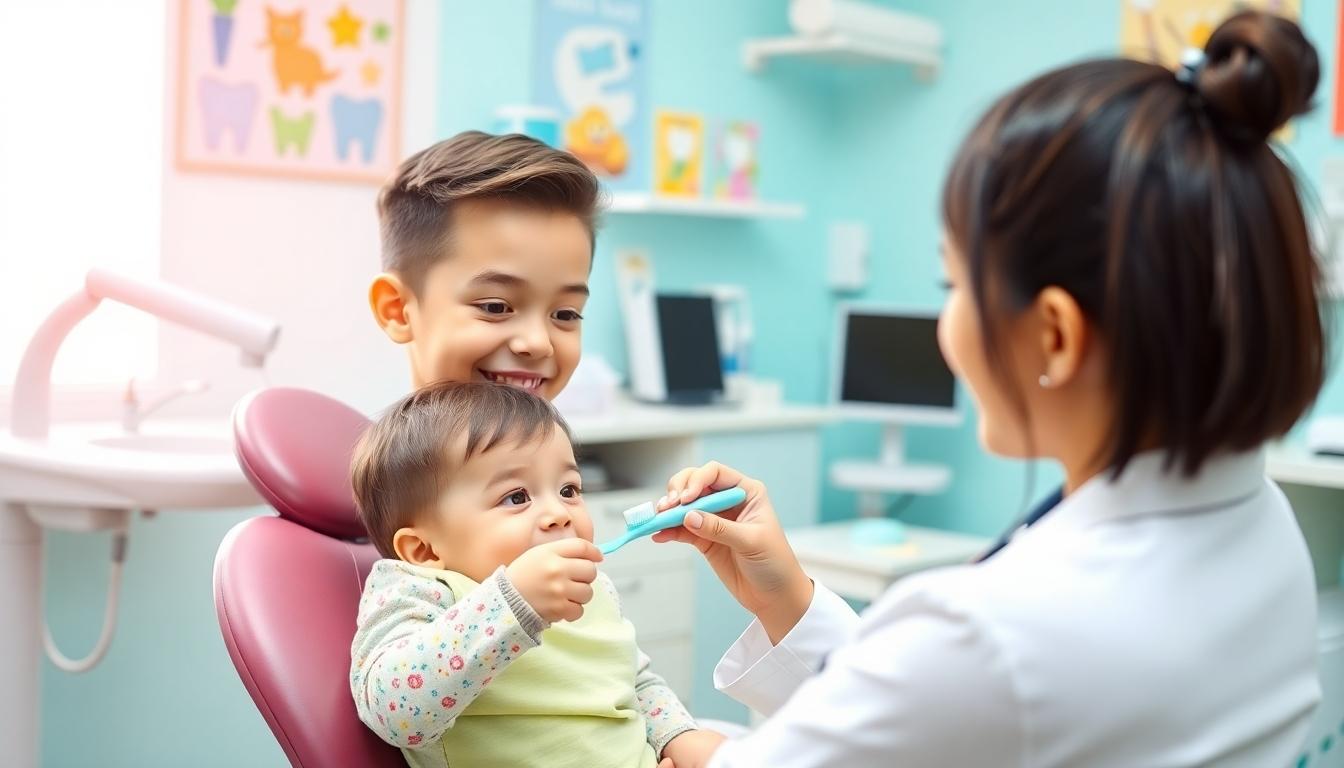
Dental riddles transform potentially boring oral health lessons into captivating activities that capture attention and foster learning. They present complex dental concepts in simpler, more accessible ways through clever wordplay related to teeth and dental care. Consider these examples: “What keeps your teeth shiny and bright and fights off plaque day and night?” (Answer: Toothpaste) or “What makes your smile so bright and wide, and fights germs from the inside?” (Answer: Toothbrush).
Educational Benefits of Dental Puzzles
Dental puzzles offer many educational advantages that traditional teaching methods often lack:
- Knowledge Retention – Students remember dental hygiene practices better when learned through riddles and puzzles, creating stronger memory associations.
- Increased Engagement – Puzzles keep learners actively participating in the learning process rather than passively receiving information.
- Simplified Understanding – Complex dental terminology and concepts become digestible when presented in the form of fun riddles and puzzles.
- Stress Reduction – Learning through play decreases anxiety about dental topics, making education more effective.
- Social Learning – Riddles encourage groups to solve problems together, reinforcing dental knowledge through collaboration.
How Dentists Use Riddles for Patient Engagement
Dental professionals increasingly incorporate riddles into their practice to create positive patient experiences:
- Anxiety Reduction – Riddles help create a relaxed atmosphere, especially beneficial for patients who experience dental anxiety.
- Educational Opportunities – Dentists use interactive riddles to teach patients about proper brushing techniques, flossing, and other oral hygiene practices.
- Patient Participation – Fun riddles encourage patients to take an active role in maintaining their oral health by making the subject approachable.
- Waiting Room Entertainment – Dental offices display riddles in waiting areas to make appointment wait times more enjoyable while subtly reinforcing dental health concepts.
- Child-Friendly Communication – Pediatric dentists particularly benefit from using riddles to connect with young patients who might otherwise feel intimidated by dental visits.
Classic Dental Riddles That Will Make You Smile

Ready to exercise your brain with some tooth-themed humor? These classic dental riddles combine wit and wisdom about oral health that will surely make you grin from ear to ear.
“What has a face but no eyes, nose, or mouth?” Answer: A tooth.
“I stand guard day and night, battling invaders that come to decay. What am I?” Answer: A toothbrush.
“What’s at least 6 inches long, goes in your mouth, and is more fun if it vibrates?” Answer: A toothbrush.
Tooth Fairy Favorites
The tooth fairy doesn’t just collect teeth—she collects jokes too! These playful riddles have become favorites among dental professionals and patients alike.
“Why did the tooth refuse to play cards?” Answer: It feared getting “pulled.”
“What do you call an optimistic dentist?” Answer: A tooth fairy.
“What do you call a bear with no teeth?” Answer: A gummy bear.
Dentist-Approved Brainteasers
Dental professionals love using these clever riddles to educate patients while keeping the atmosphere light and captivating during appointments.
“I start off strong and white, but if left alone, I can turn black and take a bite. What am I?” Answer: Tooth decay.
“What’s tiny, sharp, and only shows up when food starts to stick around?” Answer: Plaque.
“I’m not a dentist, but I have all the tools, and when I’m in your mouth, you’re bound to drool. Who am I?” Answer: A dental hygienist.
Dental Riddles for Children: Making Oral Hygiene Exciting

Dental riddles engage children in oral hygiene by combining humor with education, effectively reducing dental anxiety and promoting positive attitudes toward dental care. These playful puzzles transform routine oral health practices into exciting activities that children look forward to, creating a foundation for lifelong healthy habits.
Easy Tooth-Themed Puzzles for Preschoolers
Preschoolers respond well to simple tooth-themed riddles that introduce basic dental concepts through playful language. “What has a face but no eyes, nose, or mouth? A tooth!” presents dental anatomy in a way that captivates young minds and sparks curiosity. Children also love the riddle “What do you call a dentist who doesn’t like to work? A drill-inger!” which makes them giggle while familiarizing them with dental professionals. Another favorite asks, “Why did the donut go to the dentist?” with the amusing answer “It needed a filling!” connecting dental procedures to concepts preschoolers can understand. The classic “What’s a dentist’s favorite boat? A tooth ferry!” plays with words in a way that delights young children while reinforcing dental vocabulary.
Interactive Riddles for School-Age Children
School-age children benefit from more sophisticated riddles that emphasize practical dental health practices. These interactive puzzles often focus on identifying tooth-friendly foods, such as “I’m round and red, and my crunch protects your teeth. Apple!” or “I’m orange, long, and crunchy… Carrot!” which reinforce nutritional education alongside dental health. Children also engage with professional-focused riddles like “I check your bite and gum line, keeping your smile in perfect design. A dentist!” that build positive associations with dental visits. Another effective riddle states, “I teach you to brush, morning and night, keeping your teeth healthy, shining so bright. A dentist!” highlighting the educational role dental professionals play. For protection-focused learning, “With sealants and guards, I keep teeth safe, helping kids smile with confidence and grace. A dentist!” introduces preventative dental measures in an accessible format.
Challenging Dental Riddles for Adults
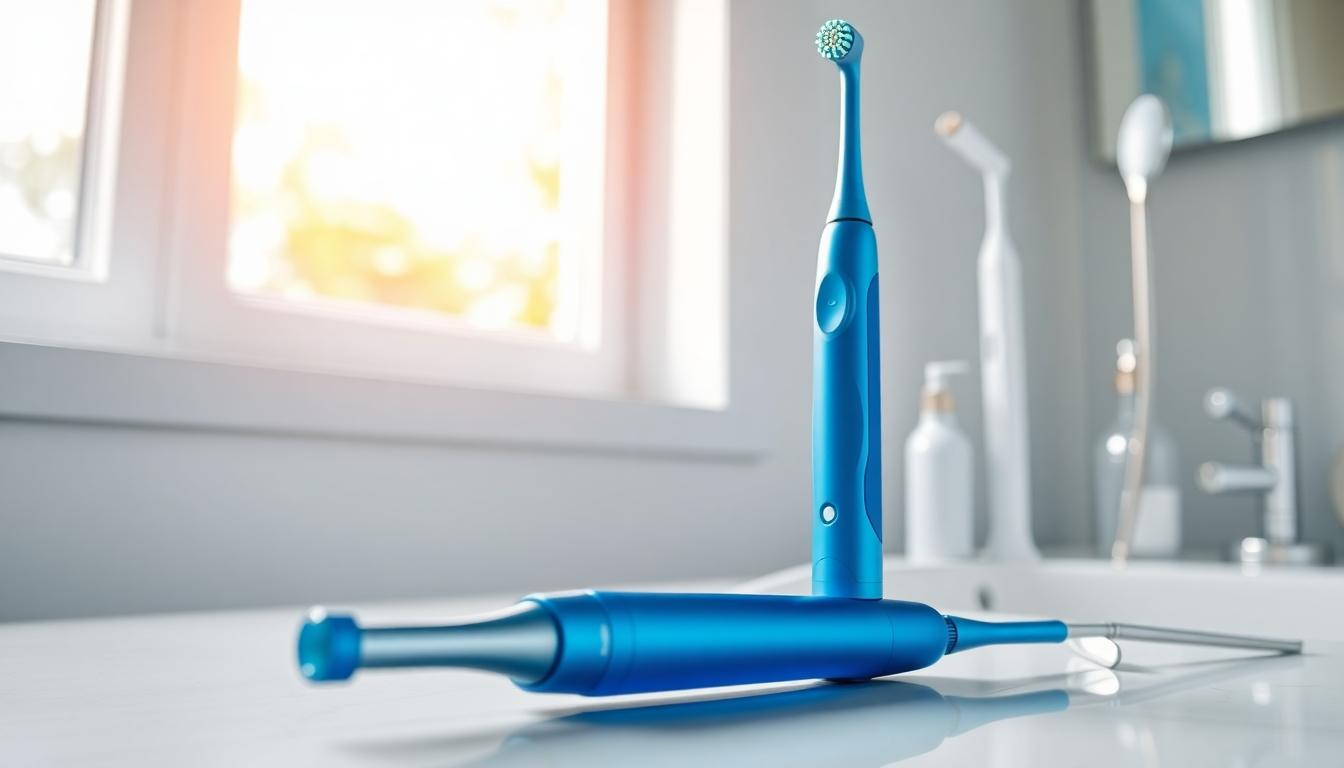
Ready to test your dental knowledge with some mind-bending riddles? These challenging brainteasers are perfect for adults who enjoy a good mental workout with a dental twist.
- I’m a sharp poke that makes you jump, but I’m here to check if your gums have a bump. What am I?
A dental probe is the answer to this tricky riddle. Dentists use this pointed instrument during examinations to detect potential issues in your gums that might not be visible to the naked eye.
- I’m an extra tooth that’s late to the game, but if I cause too much trouble, out I’ll be came. What am I?
The wisdom tooth earns its name from emerging much later than other teeth, typically during late adolescence or early adulthood. When these third molars cause pain or complications, extraction becomes necessary.
- What’s at least 6 inches long, goes in your mouth, and is more fun if it vibrates?
An electric toothbrush is the clever answer here! This dental tool revolutionizes the brushing experience by providing more effective plaque removal through its vibrating action.
Professional-Level Dental Terminology Teasers
These riddles incorporate exact dental terminology that professionals in the field will appreciate:
- I’m the shiny stuff that dentists spread, to keep your teeth safe from harm ahead. What am I?
Sealant is the protective coating dentists apply to prevent decay. Dental sealants create a barrier on the tooth surface that blocks food particles and bacteria from settling in the grooves.
- I help cover up damage, a crown I do hold, and with me, your tooth stays strong as gold. What am I?
A dental crown serves as both protection and restoration for damaged teeth. These custom-fitted caps encase the entire visible portion of a tooth, restoring its shape, size, strength, and appearance.
- I’m the invisible villain that creeps around, but with good brushing habits, I can be found. What am I?
Bacteria lurk in your mouth, invisible to the naked eye yet potentially destructive to your dental health. Regular brushing and flossing help remove these microscopic troublemakers before they cause decay.
Anatomy-Based Dental Mysteries
Test your knowledge of dental anatomy with these clever puzzles:
- I stand guard day and night, battling invaders that come to decay. What am I?
Your toothbrush serves as the first line of defense against potential dental problems. This simple tool works tirelessly to remove plaque and food particles that could lead to decay.
- I’m hidden in your gums, deep and out of sight, but if I get infected, it won’t feel right. What am I?
The root canal refers to the natural cavity within the center of your tooth. When this area becomes infected, a root canal procedure becomes necessary to remove the infected pulp and preserve the tooth.
- I start off strong and white, but if left alone, I can turn black and take a bite. What am I?
Tooth decay begins subtly but can progress to serious damage if neglected. What starts as a minor cavity can develop into extensive decay that darkens the affected area and compromises tooth structure.
How to Create Your Own Dental Riddles
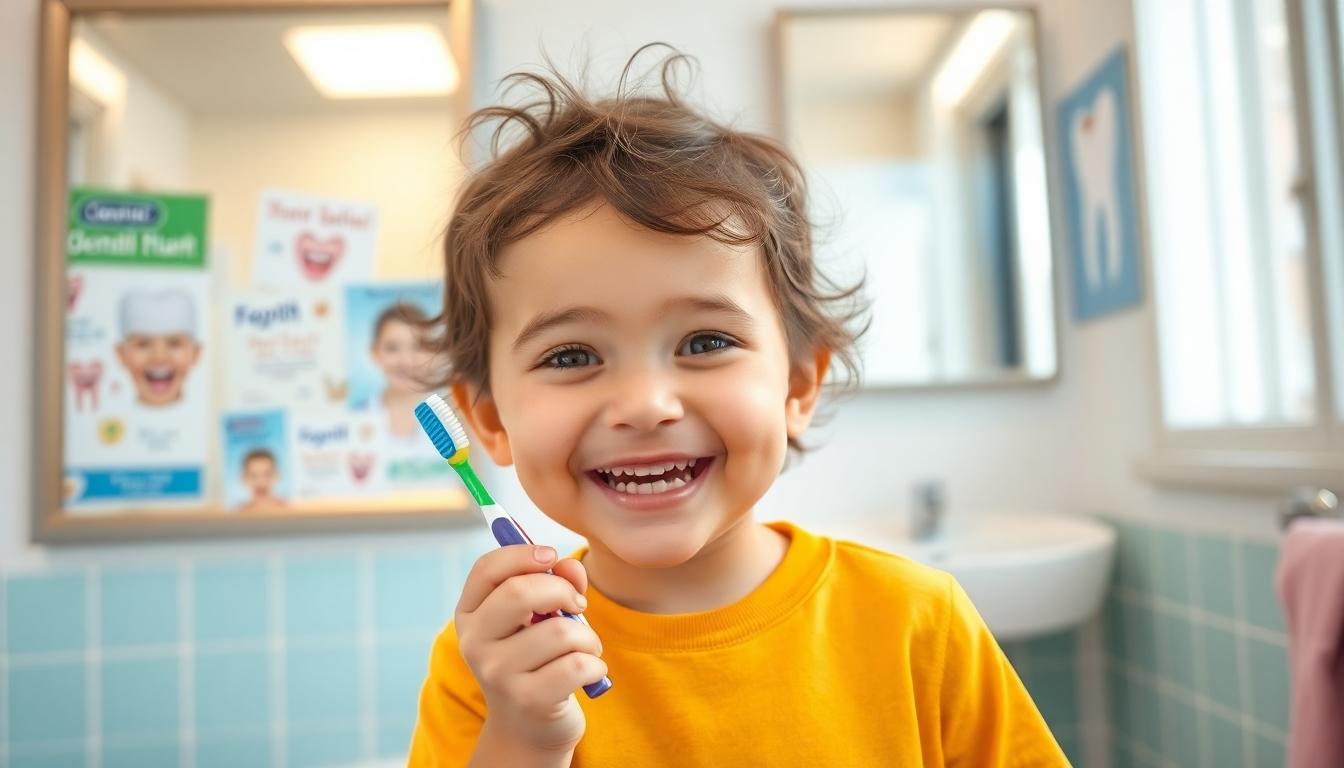
Using Dental Facts as Inspiration
Creating original dental riddles starts with dental knowledge as your foundation. Incorporate common dental concepts like teeth, gums, fillings, or various dental procedures into your riddle-making process. Think about the unique characteristics of dental tools such as toothbrushes, floss, and dental picks that can form the basis of clever wordplay. Consider the roles of different dental professionals in your riddles, from dentists to hygienists to orthodontists, each offering distinct responsibilities worth highlighting. The exact terminology used in dentistry provides rich material for crafting riddles that are both educational and entertaining.
Crafting Age-Appropriate Dental Brain Teasers
For Children, we recommend using simple, playful language that focuses on basic dental care concepts. Riddles about brushing, flossing, and healthy food choices work particularly well with younger audiences. A great example is: “What helps keep your teeth bright and clean every morning? Answer: Your toothbrush!” These straightforward riddles reinforce positive dental habits while being easy enough for children to solve and remember.
For Adults, you’ll want to create more complex riddles involving dental procedures or anatomy. Adults appreciate riddles with deeper wordplay and more sophisticated dental knowledge. Try something like: “I’m often filled but never held, what am I? Answer: A cavity.” These brain teasers challenge adults’ understanding of dental terms while still maintaining the fun, puzzle-solving aspect that makes riddles enjoyable. The complexity can scale based on whether you’re targeting general audiences or dental professionals with specialized knowledge.
Examples of Dental Riddles
“I start off strong and white, but if left alone, I can turn black and take a bite. What am I?” Answer: Tooth decay.
“I’m a protector of teeth, providing care, making sure you floss and brush everywhere. Who am I?” Answer: Dental hygienist.
“I’m an extra tooth that’s late to the game, but if I cause too much trouble, out I’ll be came. What am I?” Answer: Wisdom tooth.
Famous Dental Riddles Throughout History
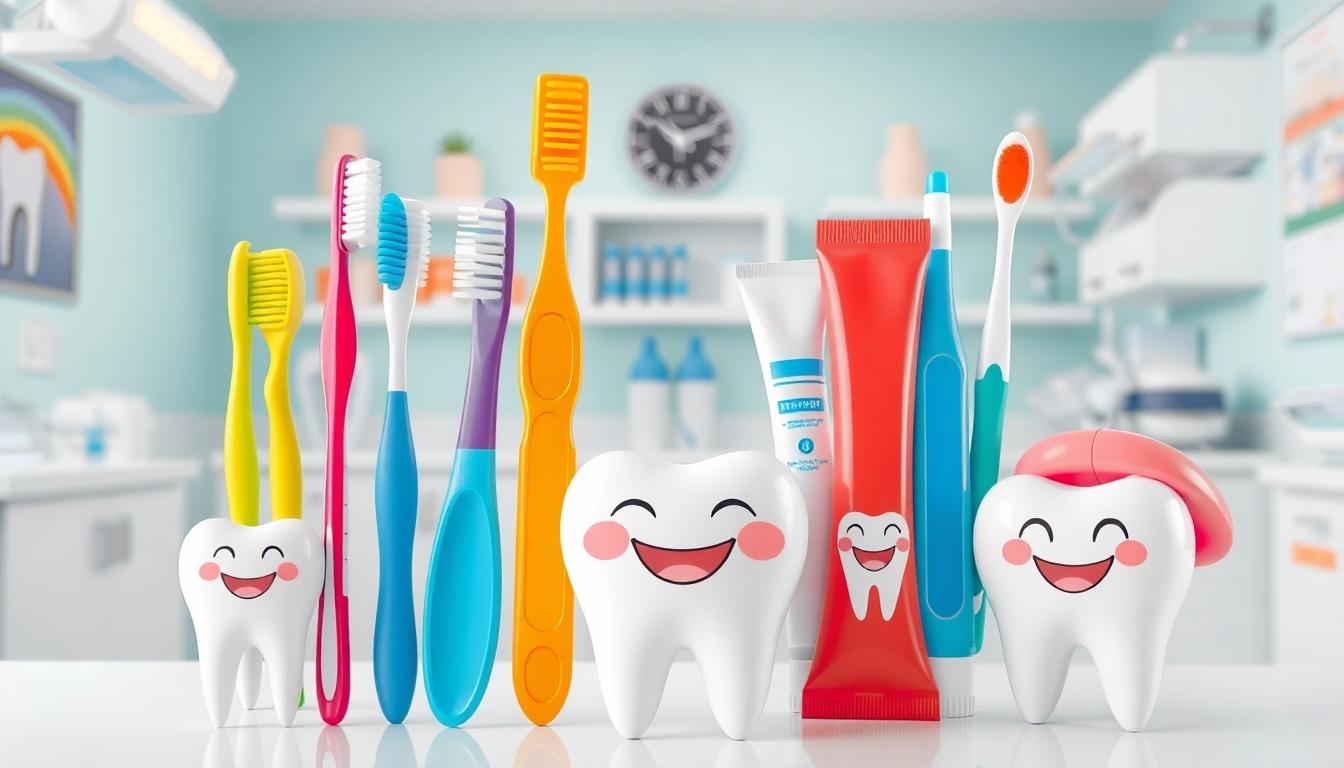
While dental riddles may not have extensive historical documentation, they’ve evolved into creative puzzles that blend humor with oral health education. Modern compilations showcase fascinating tooth-themed wordplay that both entertains and informs. We’ve gathered some of the most notable examples that have become popular in dental communities.
Classic Tooth Anatomy Riddles
Anatomy-based dental riddles cleverly personify different types of teeth and their functions:
- The Incisor Challenge: “I’m the first to meet your food, cutting through every bite with my sharp, precise mood.” This riddle highlights the primary cutting function of our front teeth.
- The Mighty Molar: “I sit at the back, chewing tough and hard, grinding food down so it’s not charred.” Molars, our powerful back teeth, take center stage in this playful description.
- The Wisdom Tooth Mystery: “Hidden away until the time is just right, emerging in adulthood, a forceful bite.” This riddle captures the late-arriving nature of our wisdom teeth.
Dental Care Themes
These riddles focus on oral hygiene practices and preventative care:
- The Floss Riddle: “I dance unseen, cleaning between, where brush and paste cannot be seen.” This emphasizes the importance of flossing in reaching places toothbrushes can’t access.
- The Night Guard Protector: “Silent and still, I watch over the night, guarding against the grinding bite.” Night guards play a crucial role for those who grind their teeth during sleep.
- The Fluoride Defender: “I am your best defense against cavities, protecting your teeth with every brush.” This riddle underscores fluoride’s vital role in cavity prevention.
Humorous Takes
Dentistry becomes lighthearted through these witty riddles:
- The Dentist’s Garden: “Why did the dentist take up gardening? To get more root canal experience.” This pun plays on the dental procedure and actual gardening roots.
- The Toothpaste Puzzle: “I’m a paste used every day to fight decay and make plaque stay away.” This simple riddle reminds us of toothpaste’s daily importance.
- The Cavity Conundrum: “I’m small, but I can cause big problems if left alone in your gums.” This riddle warns about the consequences of ignoring dental problems.
These dental riddles serve dual purposes in contemporary dental education: they simplify complex concepts for learners and help ease dental anxiety through humor. Their educational value in oral health advocacy remains important, making dental knowledge more accessible and captivating for people of all ages.
Using Dental Riddles in Classroom and Dental Office Settings
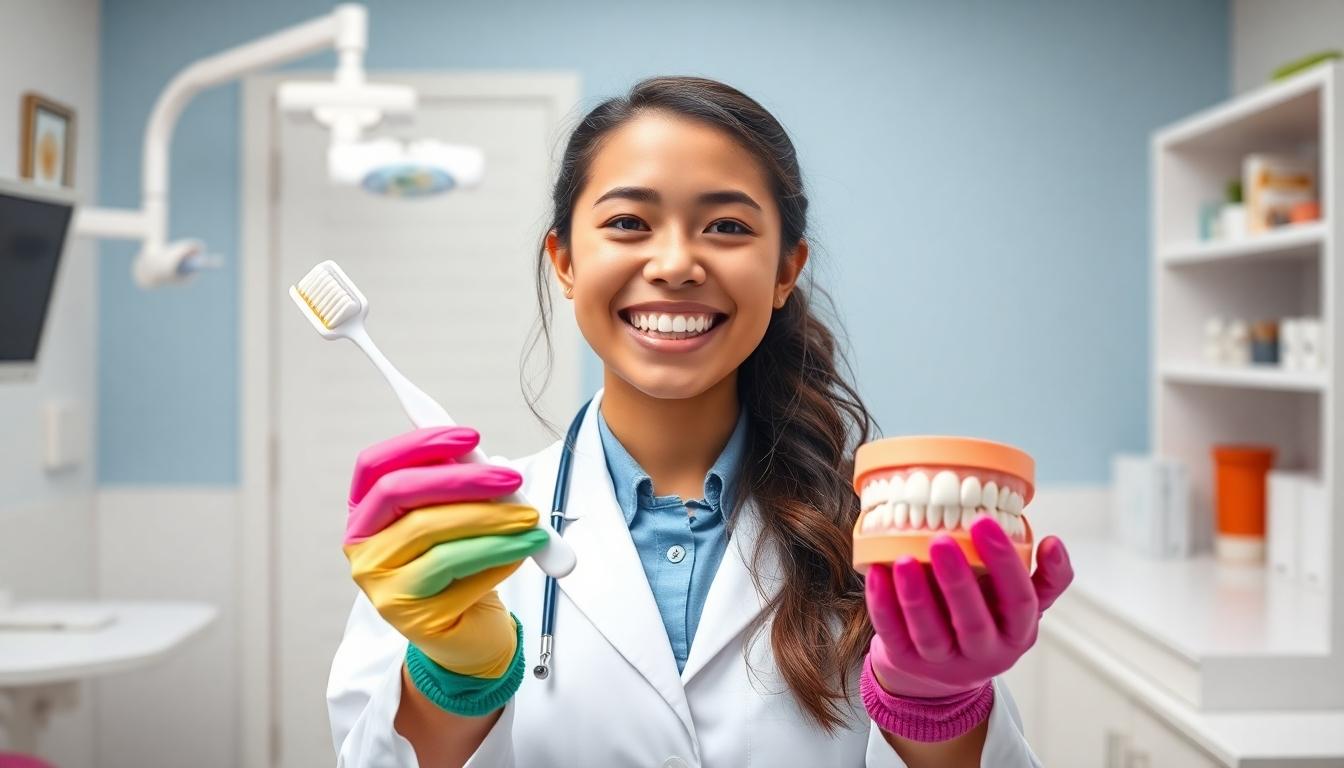
Educational Benefits
Dental riddles offer important educational advantages in classroom settings. They help students develop essential cognitive skills including problem-solving abilities, creative thinking, memory enhancement, and improved concentration—all crucial components for academic achievement. Children who engage with riddles regularly tend to demonstrate stronger logical reasoning skills and often collaborate more effectively with their peers. When teachers incorporate dental-themed brainteasers into their lessons, students learn important oral health concepts while simultaneously strengthening their critical thinking capabilities.
Dental Office Use
Dental professionals are increasingly using riddles to transform potentially stressful appointments into enjoyable experiences. Funny dentist riddles effectively alleviate anxiety and fear that many children associate with dental visits by creating a positive, lighthearted atmosphere. Dentists strategically use these playful questions during procedures to distract young patients, making them significantly more comfortable. Questions like “What award did the dentist win? A little plaque” can instantly change a child’s mood and perception of their dental visit.
Promoting Oral Hygiene
Incorporating dental riddles into daily hygiene routines makes brushing and flossing feel more like play than obligation. Children respond enthusiastically when oral care involves elements of fun and discovery. Dental humor transforms mundane activities into captivating experiences that children look forward to rather than avoid. We’ve found that families who use riddles during tooth-brushing time report greater consistency in their children’s oral hygiene habits. This approach helps establish positive dental care routines that often continue into adulthood.
Examples of Dental Riddles
Effective dental riddles blend humor with educational content about teeth and oral health. Popular examples include: “What do dentists call the x-rays they take of patients’ teeth? Tooth pics!” and “What award did the dentist win? A little plaque!” These clever wordplays entertain while subtly reinforcing dental terminology and concepts. Dental professionals often customize riddles based on a child’s age and comprehension level, ensuring maximum engagement and learning. Even simple riddles can create meaningful connections between children and their dental health education.
The Connection Between Humor, Riddles, and Dental Health Education
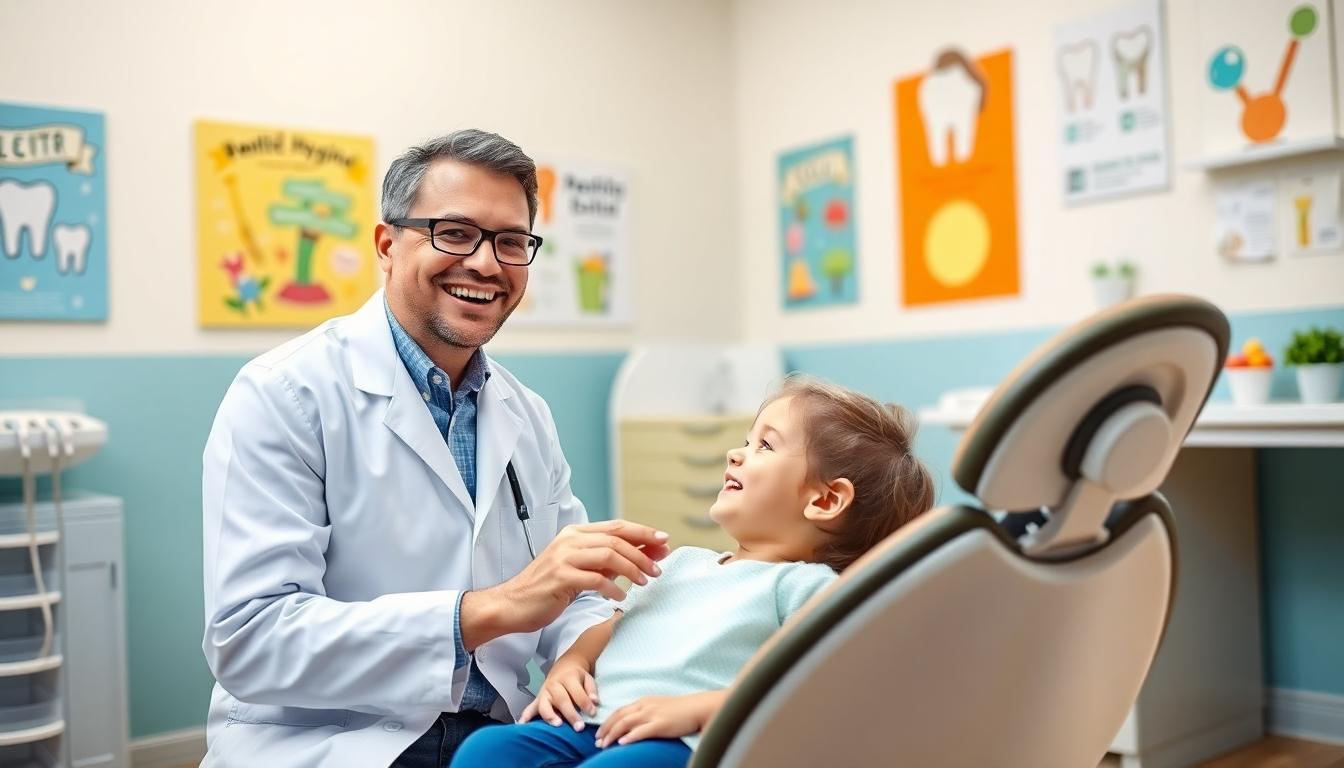
Educational Value of Riddles
Riddles offer important benefits in dental education by improving analytical thinking and problem-solving skills. Medical education research has shown that riddles encourage deeper inquiry and clinical reasoning, making them valuable tools for learning complex concepts. They function as effective mnemonic devices in dental contexts, transforming complicated oral hygiene procedures into memorable phrases that patients can easily recall. The structured ambiguity found in riddles actively engages learners, which substantially improves retention of important dental health principles and practices.
Role of Humor in Dental Practices
Humor plays a crucial role in creating positive dental experiences, especially for children who often experience anxiety during visits. Dental riddles and jokes like “What award did the dentist win? A little plaque” create lighthearted moments that reduce stress and build rapport between practitioners and patients. Pediatric dentistry particularly benefits from this approach, as humor effectively distracts children from procedural discomfort while simultaneously encouraging cooperative behavior throughout treatments. Patients who associate dental visits with positive emotions are more likely to maintain regular appointments and follow recommended care guidelines.
Integration in Oral Hygiene Education
Incorporating riddles into daily oral hygiene routines transforms mundane activities into captivating experiences. Playful questions such as “Why did the tooth go to school? To get a little brighter!” make brushing and flossing more appealing, especially for younger patients. This strategic approach leverages humor to sustain children’s interest in daily dental habits, resulting in improved compliance and better long-term oral health outcomes. Parents report that children who learn dental care through fun activities develop more consistent hygiene practices compared to traditional instructional methods.
Measurable Outcomes
Combining humor and riddles in dental education produces several tangible benefits:
| Outcome | Description | Impact |
|---|---|---|
| Anxiety Reduction | Alleviates fear associated with dental visits | Fewer canceled appointments and less distress during procedures |
| Enhanced Information Retention | Simplifies complex information through captivating wordplay | Better understanding of oral health concepts |
| Improved Adherence | Encourages consistent oral hygiene practices | Reduced incidence of cavities and gum disease |
Research indicates that these approaches are particularly effective in pediatric settings, where building positive associations with dental care early can influence lifelong health behaviors. Educational programs incorporating dental riddles report higher engagement levels and improved knowledge retention among participants of all ages.
Conclusion: Why Dental Riddles Are More Than Just Fun and Games
We’ve explored how dental riddles transform something as routine as oral health into an captivating adventure. These clever wordplays do more than just make us smile—they’re powerful educational tools that reduce anxiety make complex concepts accessible and create positive associations with dental care.
From children learning proper brushing techniques to adults challenging their knowledge of dental anatomy there’s a riddle for everyone. The research is clear: combining humor with education leads to better retention improved compliance and lifelong healthy habits.
So next time you’re waiting for your dental appointment or helping a child with their brushing routine try incorporating a tooth-themed brainteaser. Your dental health journey doesn’t have to be all serious—it can be filled with smiles laughter and the occasional groan-worthy pun.
Frequently Asked Questions
What are dental riddles and why are they popular?
Dental riddles are tooth-themed brainteasers that combine humor with oral health concepts. They’ve gained popularity in dental offices nationwide because they make learning about dental care fun and lighthearted. These clever wordplay puzzles appeal to both dental professionals and puzzle enthusiasts while helping to reduce anxiety about dental visits.
How can dental riddles benefit children’s oral health education?
Dental riddles transform boring oral health lessons into engaging activities for children. They improve knowledge retention, simplify complex concepts, and reduce anxiety about dental care. Age-appropriate riddles for preschoolers and school-age children make brushing and flossing feel like play rather than chores, promoting positive dental habits that can last a lifetime.
Do dentists actually use riddles in their practice?
Yes! Many dentists incorporate riddles to enhance patient experiences by reducing anxiety, providing educational opportunities, and encouraging patient participation. Riddles are especially effective in waiting rooms to pass time pleasantly and when communicating with children to make dental visits less intimidating and more enjoyable.
What makes a good dental riddle?
A good dental riddle combines dental knowledge with clever wordplay and humor. It should be age-appropriate, incorporate common dental terminology, and ideally teach something about oral health while entertaining. The best riddles connect dental concepts with everyday situations in surprising and amusing ways.
Can dental riddles actually improve oral health outcomes?
Research suggests they can! Dental riddles reduce anxiety, enhance information retention, and improve adherence to oral hygiene practices. By creating positive associations with dental care, especially in pediatric settings, riddles and humor influence lifelong health behaviors. This approach makes dental education more effective by making it more engaging and memorable.
Are there dental riddles for adults and professionals too?
Absolutely! While children enjoy simple tooth-themed riddles, there are challenging riddles designed specifically for adults and dental professionals. These include professional-level terminology teasers and anatomy-based dental mysteries that require advanced knowledge of dental structures and procedures, appealing to those with dental expertise.
How can parents incorporate dental riddles into daily routines?
Parents can share dental riddles during brushing and flossing time to make these routines more enjoyable. Riddles can be written on bathroom mirrors, included in lunch notes, or used as bedtime brain teasers. This approach transforms necessary hygiene practices into fun moments of connection while reinforcing the importance of oral health.
What’s the history behind dental riddles?
Dental riddles have evolved over time from general health folklore into specific educational tools. Throughout history, riddles have been used to convey wisdom about health in memorable ways. Modern dental riddles combine this traditional approach with contemporary dental knowledge, creating puzzles that are both entertaining and informative about current oral health practices.







